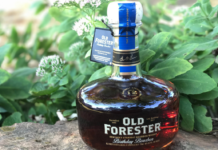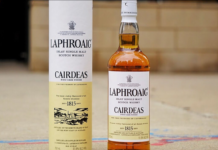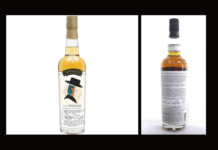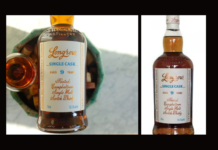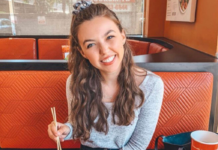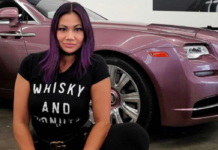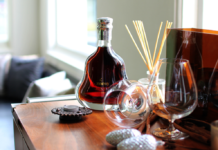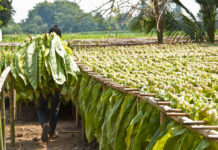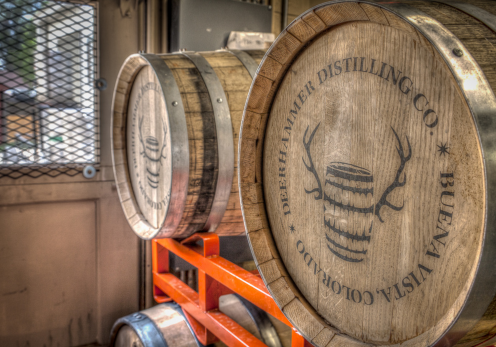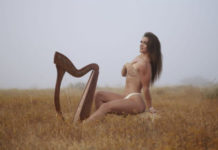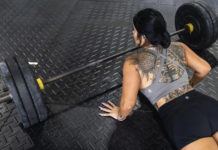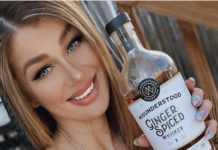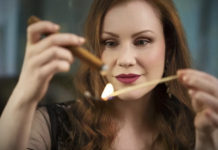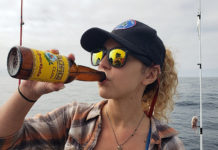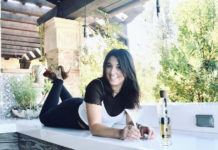Amy and Lenny Eckstein founded Deerhammer in 2010. Drawn to Buena Vista, Colorado by the whitewater currents of the Arkansas River, their passion for whiskey is driven by that same adventurous spirit. As artisans and business owners, Amy and Lenny’s process is defined by a deep curiosity for the history of spirits and a thoughtful analysis of each individual step of the distilling process.
Taste the Dram spoke to Lenny Eckstein about making Whiskey in Buena Vista, Colorado, and what he and his wife are currently doing to stand out as the premier whiskey in the US.
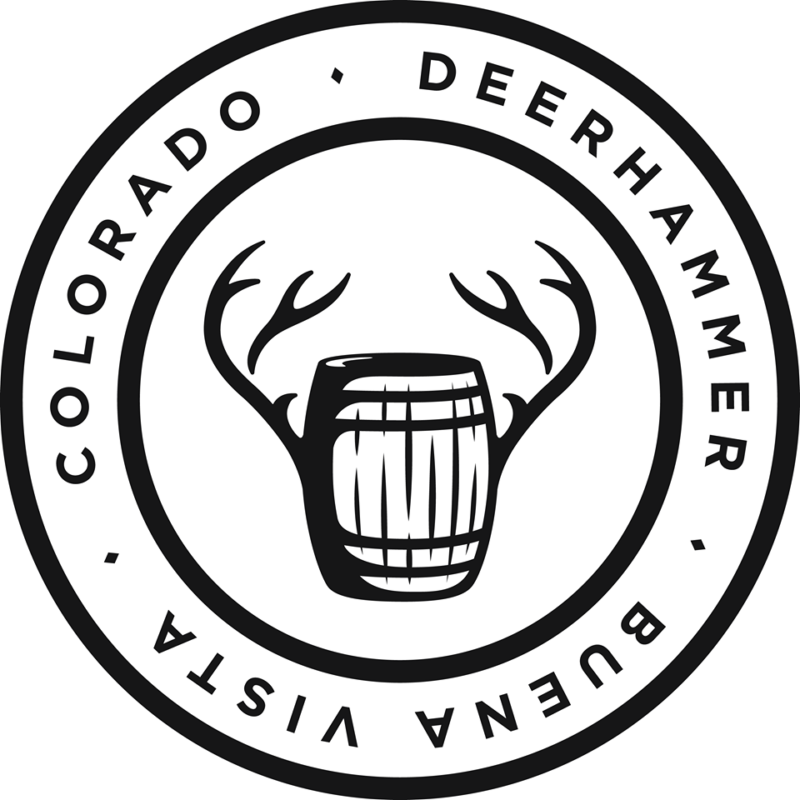
Lenny, I would like to kick off by asking what the backstory is to setting up the Deerhammer Distillery, how you came to be involved and what drew you to the project?
LE: I suspect most distilleries can offer up a fairly cut and dry answer to this question, but it’s actually a tough one for us. There was not a single conversation that my wife (and businesses partner) Amy had, or moment of massive inspiration that triggered Deerhammer. It was really more of a slow and blurry move towards a passion project that would allow me to create whiskey in Buena Vista – a small mountain town in central Colorado with some of the best whitewater kayaking around. I remember intentions being set on starting very small – like, 500 square feet of production space with an 80 gallon pot still and some sized up home-brew equipment for milling, mashing and fermentation. We ended up securing one of the only viable buildings in town for whiskey production.
A 2,000 square feet right in the middle of main street that most recently housed Curves (you know… that women franchise “gym”). From there we upped the scale of the equipment that we would come to start making whiskey with. Fortunately we had 0 formal business training going into this endeavor. Just a level of fortunate ignorance that we knew for sure that we could do this. The various risks that may have scared others off early on, didn’t seem all that daunting at the time. With a 140 gallon direct fire copper potstill and some old re-purposed dairy tanks… we were making whiskey in January of 2012. One whole barrel per month!
What was your vision for this project. Tell us about the name.
LE: Like so many other American craft distillers, I drew a lot of inspiration from the craft beer industry. Looking at the beer landscape and noting the various success stories – in my estimation, was about building a brand that had genuine personality. The product certainly needs to be of quality but it should also be a real representation of the person that creates it. As Amy and I built this thing, it had to be about who we are. Part of who we are is the place we chose to do it in. There is no where else in the world that we’d rather be than in Buena Vista, CO and we wanted to celebrate that in the distillery. In reading though the history of this town, we came across mention of one of the original residents, a german woman who carried the namesake of Deerhammer. It just seemed to make sense.
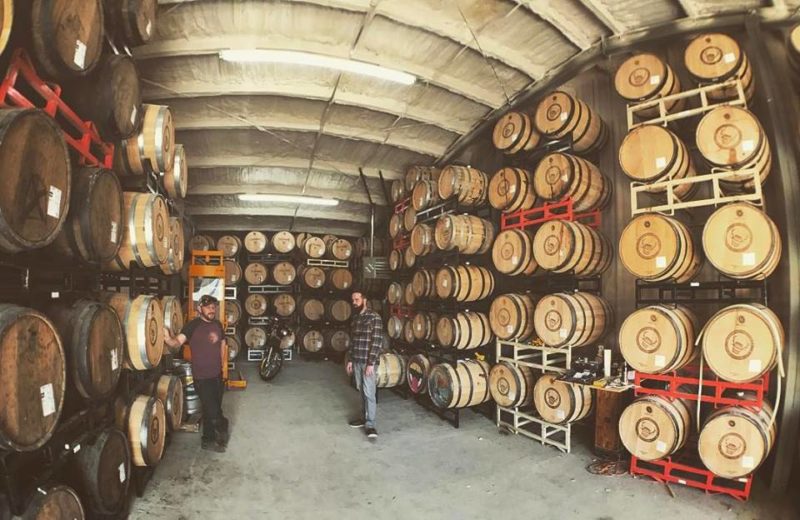 What have been the main challenges involved in setting up a new distillery?
What have been the main challenges involved in setting up a new distillery?
LE: Woooo! That’s a great question, and all the challenges are also kind of the thing we’ve really grown to love. It’s this never ending web of problems to be solved. For Amy and I, not having a background in business, we’ve gotten to this really cool place where identifying a goal and implementing our style of surmounting the challenges with whatever level of efficiency and intention has really become our thing. Whether it’s forecasting growth and tweaking our production, or working though a repackage/re-brand that we were heavily focused on last year… all these challenges are really interesting.
But kind of more to the point of your question – The specific way we choose to approach making whiskey was and still is a humongous challenge. I feel like there are really 3 approaches to setting up a craft distillery. One way is to business plan it out, seek major funding and execute while the whiskey matures for x number of years. Another way is to buy some other distilleries juice and bottle it as your own brand. That’s direction that many folks take, but that’s a business decision, often times based in raising capitol as soon as possible. We got into this to make something we are proud of, not just to bring a brand to market – which leads to the 3rd approach which we took – Starting out very small, totally independent, and growing slowly.
No outside investors telling us what to do. No marketing team spinning our offering into something that doesn’t embody our personalities, and definitely not bottling a drop of alcohol that we did not make from scratch. The challenges? An obvious one is cash flow, and that’s been tricky, but we’ve got a tasting room that sees a decent amount of traffic in the summer months. The tasting room has helped to keep us afloat. Another challenge was the whole whiskey maturation time. We wanted to bottle a straight whiskey early on, but we had to have something to market sooner than that, so we spent our first few years filling quarter casks with such a narrow cut that we were able to bottle some terrific whiskey within 1 year.
We ultimately moved into maturing our whiskey in full size casks for a minimum of 2 years, but the challenges there are that, even with a good amount of growth in production, it’s really tough to no run out of whiskey. We’ve had to take such a slow growth approach to distribution. I mean, Deerhammer has been making whiskey for over 5 years and in Denver most folks have never heard of us (although that’s been coming around lately as we’ve finally been able to get more whiskey to market.
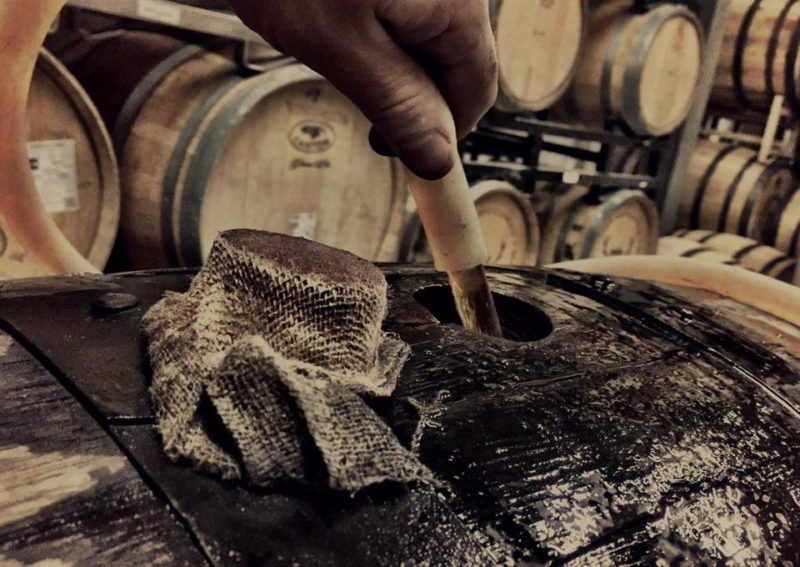 Where or who do you feel is the driving, innovative force behind our craft distilling industry right now?
Where or who do you feel is the driving, innovative force behind our craft distilling industry right now?
LE: It’s in the distilleries that are turning heads by blending new and old into amazing flavors. For me, It’s not in making a 100% rye and shouting “craft”. If I want a 100% rye or traditional bourbon grain bill, I’ll probably just buy it from any of the huge distilleries that put an amazing $30 bottle of whiskey on the shelf. No. It’s about big flavor. It’s about unique flavors. It’s about looking for those things that might be ignored by the bigger distilleries because the flavors might not fit properly within their broader portfolio, but are absolutely worth exploring. Things like using grains that impart definitive complexities, or maybe it’s bringing in a component of smoke, or maybe it’s looking at a less than traditional barrel treatment or a new take on finishing. Honestly, I think those bringing the most significant innovation to craft distilling are those with a background in beer. There are so many industry folks that came up in distilling tradition and can speak forever about the same old bourbon or rye.
Don’t get me wrong, I’ll certainly enjoy a dram of four roses, or whatever kick ass offerings that might come out of buff trace, but come on… after a while, holy boring. We need more variety of flavor. The angle that comes from really understanding the full gamut of grains, yeast, fermentation technique and being knowledgeable and creative enough to properly bring those variables together… that’s what a beer tradition brings to the table and that approach is a big part of what’s driving craft whiskey.
Explain a little about your background and how and when you came to have an interest in distilling.
LE: I always sucked at math. And chemistry. Actually, I really sucked at school in general. From an early aged I was definitely more visually/artistically inclined and I found an undergrad in visual arts to be a natural path. I like to make things. I mean, i think everyone like to make things it’s just a matter of finding ones medium for expression. Out of art school, I fell into a career as a graphic designer and I enjoyed that for a decent stretch of time. It was a means of creating for sure, but it was heavy on the advertising side and that gets old quick. I started home brewing beer in my early 20’s and that became my outlet for creative expression. You know… liquid creativity. Plus I really enjoyed beer a lot a that point (real whiskey appreciation came later). Years down the road and now in my mid-30’s, making beer had become an obsession. I was waking up a 4a.m. to brew beer before I went into the office, and was skipping out of work early to get home to start another batch.
At one point I wandered into a local brewery and worked along with their head brewer for an evening to kinda figure out if this was something I wanted to do part-time after my normal work day. Well, it wasn’t. I totally enjoyed it, but it was just more hours of work than I could handle at the time (pft. as if i knew what too many hours of work was at that time!) Anyway, something that came out of that brew session was a conversation about how if one knew how to brew beer, they could pretty much just clamp a basic still head on top of a 15 gallon keg (please don’t try this at home) and boil off that beer into “whiskey”. I remember sitting there hearing this and my mind being about as blown as it ever was. That was the start of a spiral (up or down depending on your take) into the world of distilling whiskey. Worth noting, that brewer who I had the conversation with during a scarification rest, went on to run Vapor Distilling in Boulder (thanks Ted!).
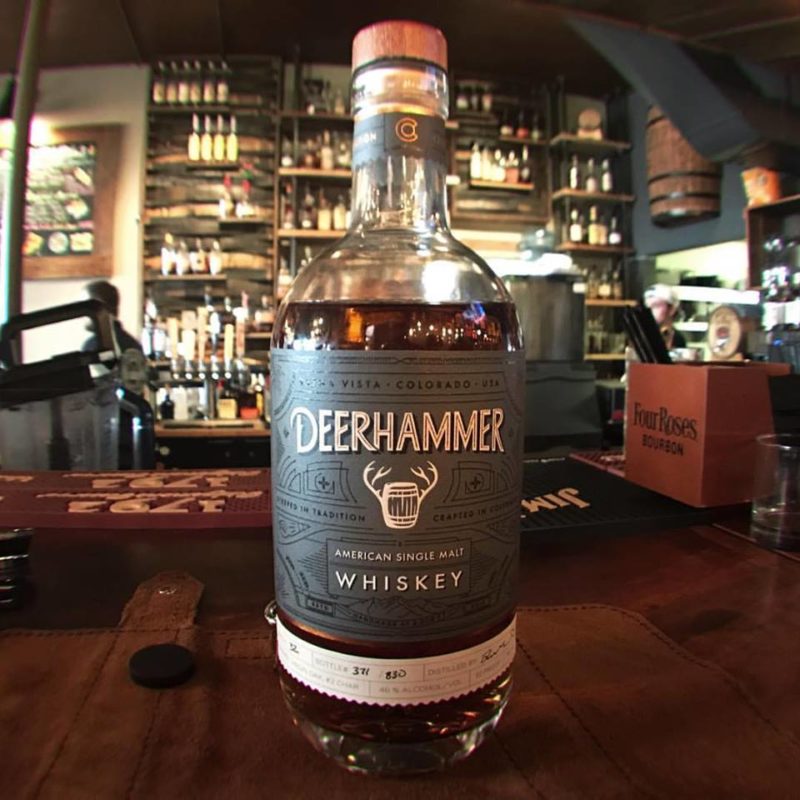 What whiskey expressions do you currently produce, and how are they different?
What whiskey expressions do you currently produce, and how are they different?
LE: We’ve been producing an American Single Malt from day one. We’ve now expanded our range of American whiskies to include a 4-grain wheated bourbon and a lightly smoked rye – although those two won’t make their way to bottles for at least another 18 months or so. At Deerhammer our approach to recipe formulation is based around, what aren’t other distilleries doing (as far as we know) and how awesome can we make this thing.
Here are the grain bills for our 3 whiskies:
American Single Malt: 85% pale malt, 5% c140 malt, 5% c45 malt, 5% chocolate malt
Bourbon: 66% corn, 20% red spring wheat, 10% rolled oats, 4% chocolate malt
Rye: 70% Rye, 10% smoked oats, 10% plain oats, 10% chocolate malt
Your favorite thing about going into the distillery each day?
LE: Well, one way to answer that question is that have not one day ever gotten up in the morning and not wanted to go to work. I can not say that about any other job I’ve ever had. Now, sure… it’s a bummer when the river is ripping in June and I have to be in the shop working. But I’m making whiskey. Aside from that… opening the back door and catching the aroma of an active fermentation, or whatever else we might have going on in production… working towards growth of our brand… really just being involved in something that I love so much. It might sound cliche but, this isn’t just a business it really is a passion. We love this stuff.
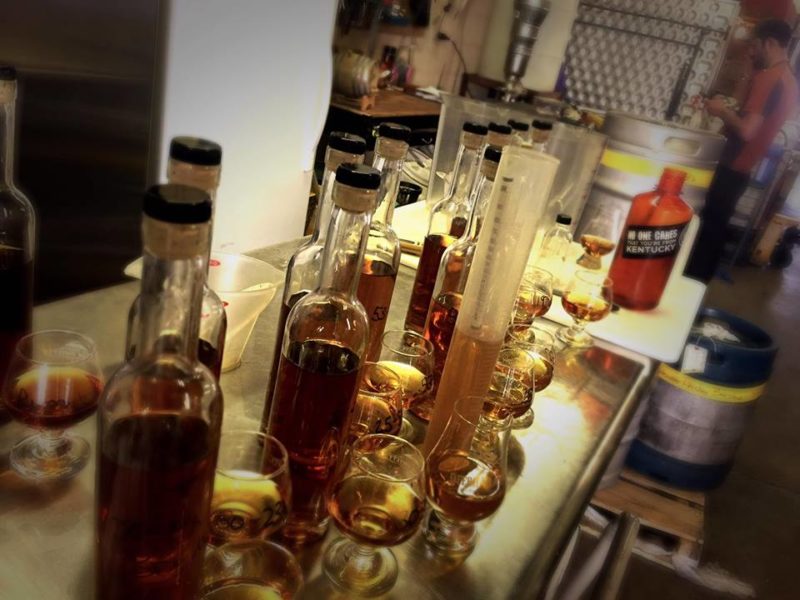 What – in your opinion – makes the spirits produced at your distillery unique?
What – in your opinion – makes the spirits produced at your distillery unique?
LE: Our grain selection plays a large part in our flavor. We run open fermentation and let our wash ferment on the warm side to really leverage ester formation and impart serious complexities to the matured whiskey – although I can’t say that is terribly uncommon. We really hop back and forth between traditional and innovation. Our stills are traditional pot stills. Not these hybrid column/potstills that many distilleries are now running, but real basic pot stills like the ones that were used hundreds of years ago and the ones that kick in the real big flavors. We also run our spirit still with direct fire so there’s a good level of kettle caramelization that occurs though a maillard reaction – that’s some science stuff right there (google it up if your curious). Even though I said I sucked at science, I’ve really come around to love certain aspects. Not so much that we feel the need to send our whiskey though a gas chromatograph/mass spec, but enough that we do what we do with intention and knowledge of the process and results. Also worth mentioning, we use toasted #2 char new American white oak for our whiskeys. The lower level of char allows more flavor from our distillate to push though over the years in the barrel. A good bit less caramel, vanilla, flavor than you get in a #3 or #4 char, and a bit more coffee, raisin, dark chocolate flavor that comes though from our grain bill.
Does the geographic location and the climate play an integral part in the maturation of your whiskey?
LE: I mean… yeah, but it’s not like I can prove it. We make whiskey at 8,000 feet above sea level. Humidity is absurdly low and the temperature swings are dramatic. We’re right at the base of the continental divide and the native flora that impacts our fermentation is legit. That being said, I don’t have a duplicate distillery in dramatically different climate. Maybe one day… opening up a 2nd distillery in Mexico would be pretty great. Until then though, I’ll maintain that our location and climate most certainly have an effect on our whiskey but I’m not going to sing the song of terroir and how critical making whiskey in Buena Vista is, beyond the fact that we have epic mountain biking and kayaking right out our door.
What led you to start your own business?
LE: We didn’t know any better! And, thankfully so. Besides that though, I like to do things my own way . I don’t do management very well and as a result, we try to give our employees as much autonomy and overall respect for how good they are at their jobs.
What are the most important factors affecting whisky distillation? How do you ensure that these are carefully balanced to produce a consistently high quality product?
LE: I sorta hit this a bit with regards to what makes our spirits unique, but still… I do think it’s important to understand your grain. The quality and flavor contributions are tremendously important. Deerhammer utilizes Colorado grown grain whenever it’s of suitable quality, but we won’t blink at sourcing our grain from elsewhere when quality dictates. Beyond that, mash technique matters more when your working worth a wide variety of grains as we do and we’ve really worked to design our distilling equipment to allow for the techniques that we implement.
You know, something that is really important at Deerhammer, which I find get’s slept on a lot, is the importance of the distillate. By that, I mean, you hear folks out there speaking about the contributions of maturation… how the barrel contributes whatever huge percentage of flavor and that the maturation is what it’s all about. You can put bullshit in a barrel and after enough years it starts to taste pretty decent — while never the plan, I’ve done it! I’ve put disappointing whiskey in a barrel and after 3+ years it starts to mellow out and turn a corner. Nothing that I’d want to hang my hat on, but certainly a quality spirit after a few years.
Now, if you put a friggin delicious fresh-off-the-still distillate in a barrel for that same amount of time, that’s when something special happens. We’re not just making ethanol and letting the barrel impart some magic. Nah, we’re making whiskey with complete intention from start to finish.
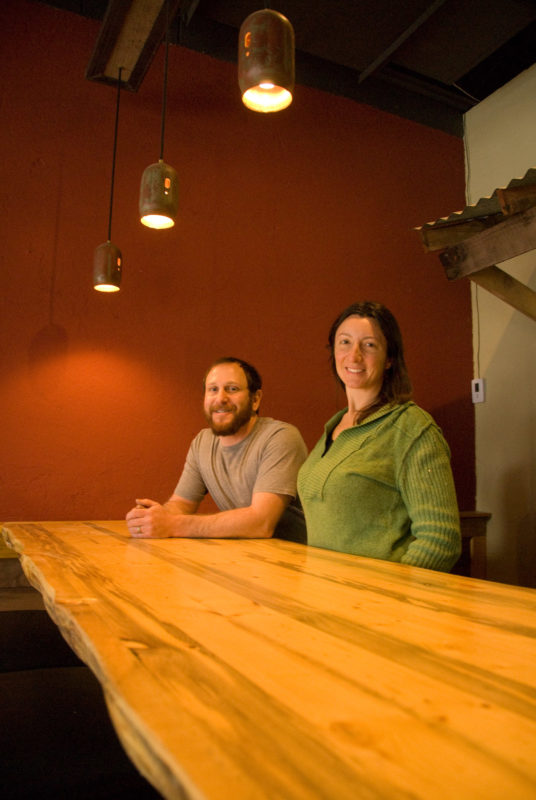
Why did you start production? Did you see a gap in the market or was it to fulfill some passion?
LE: I’d say a bit of both, although I don’t know if I’d call it a gap in the market as much as just observing that there was room in the market for more craft distillers to shake things up. I’d like to say that passion would have pushed us though even if the market was more saturated, as it is now, but I don’t know. I mean, if there were already a distillery that had set up shop in Buena Vista, and the challenges of shelf space were then what they are now…
Where do you see your distillery 5 years from now?
LE: In 5 years, Deerhammer will most certainly have busted out into other markets beyond Colorado. Our current American Single Malt will be joined by year round offerings of Bourbon and Rye, and we’ll continue to release some small batch (500 or so bottles) experimental stuff a few times per year. Hopefully my kid, who will be 8 at that point, will have figured out how to become more productive around the distillery verses his current habit of removing bungs from full barrels and not telling anyone.
Anything else you’d like to share with our readers?
LE: We’re looking forward to seeing our whiskey become more available to a broader market, but in the mean time, most states can order our whiskey through a few retailers that take online orders and ship around the country. From our website (deerhammer.com) there’s a “get some” link that ties in with those online retailers.
Oh, also… We’ve got some pretty cool stuff that we’ll be bottling up for in the next 3-6 months: We’ve got the first of an ongoing release called the Progeny Series where we’re working with craft beer producers to try all sorts of stuff that celebrates the creativity in both the beer and whiskey worlds. And, in September well be shipping a Port Cask Finished version of our American Single Malt. We’ve taken 2yr old single malt let it finish in these amazing port casks for another 8-12 months. Even though it’s got a bunch more time to hang out in barrels, this one is already tasting soooo good and we’re stoked to let folks try it. It’ll be an ongoing seasonal release.
If anyone reading this is ever out in our area (about 2 hours from Denver or Colorado Springs), please consider visiting Derhammer. We offer tours all the time and have a great little tasting room, but the real treat is just spending time in Buena Vista – getting on the river, hitting the hot springs, walking though the mountains… this place is really special. That’s about it. Thanks for letting us chime in on your website!





